Tick Control Guide: Protect Your Home & Health
Ticks are arachnids that belong to the order Ixodida. These blood-feeding parasites are commonly found in grassy and wooded areas, where they wait for a host to attach themselves to. Ticks are well-known vectors of various diseases, including Lyme disease and Rocky Mountain spotted fever, making them a health concern for both humans and animals. They have specialized mouthparts designed for piercing the skin of their hosts and feeding on their blood. Ticks can be found worldwide and come in various species and sizes. To prevent tick bites, it’s important to take precautions such as wearing long clothing, using tick repellents, and performing regular tick checks after outdoor activities, especially in areas where ticks are prevalent. Understanding these tiny arachnids is crucial for safeguarding your health when spending time in tick-prone environments.
The different species of ticks
Ticks are common ectoparasites found across the globe, with several species gaining notoriety for their impact on human and animal health. Understanding these prevalent tick species is essential for effective prevention and management:
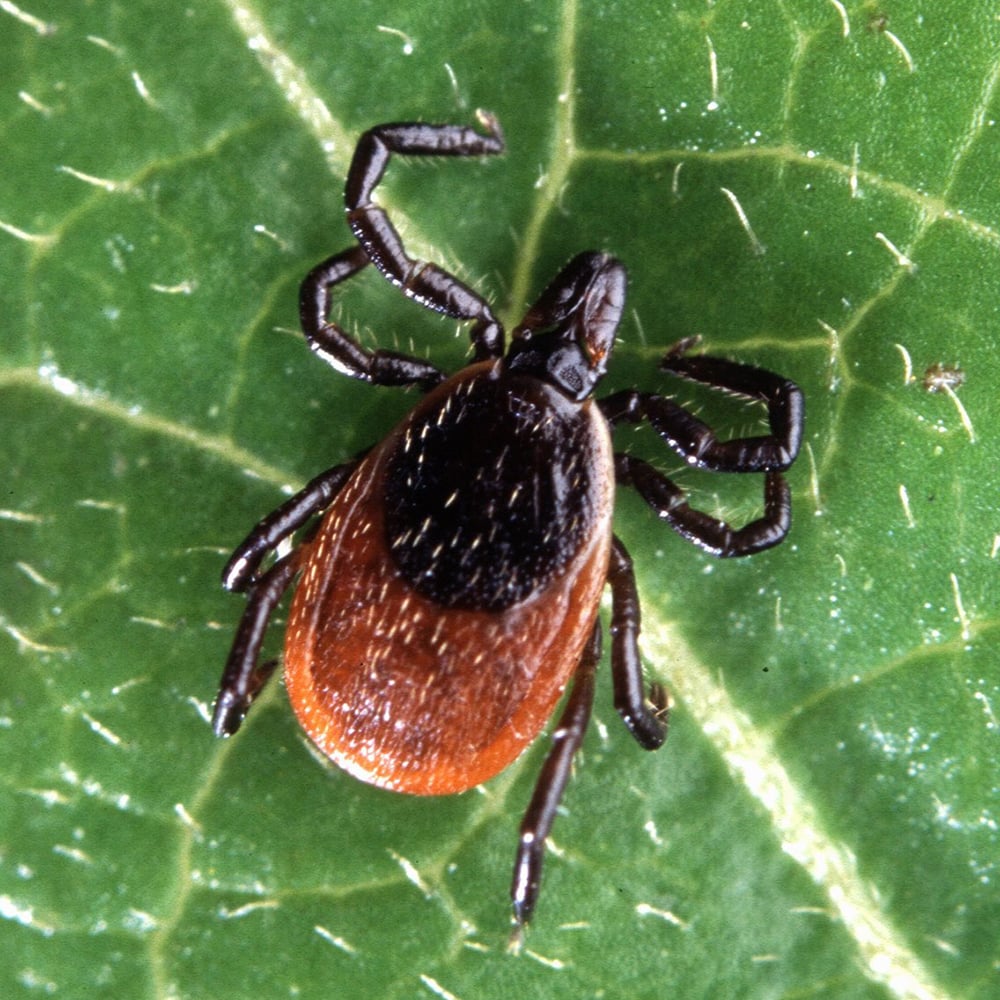
Deer Tick (Ixodes scapularis)
Also known as the black-legged tick, this species is widespread in North America. It’s notorious for transmitting Lyme disease, making it a primary concern for outdoor enthusiasts and residents of tick-prone regions.
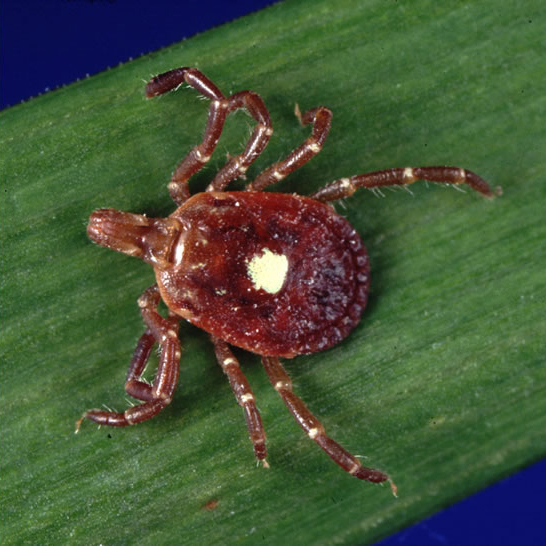
Lone Star Tick (Amblyomma americanum)
Native to the southeastern United States, the lone star tick has a distinguishing white spot on its back. It can transmit diseases like ehrlichiosis and may be encountered during outdoor activities in its range.

Gulf Coast Tick (Amblyomma maculatum)
Primarily found in the southern United States, Gulf Coast ticks can transmit diseases like Rickettsia parkeri rickettsiosis. People in these areas should be aware of tick prevention strategies.
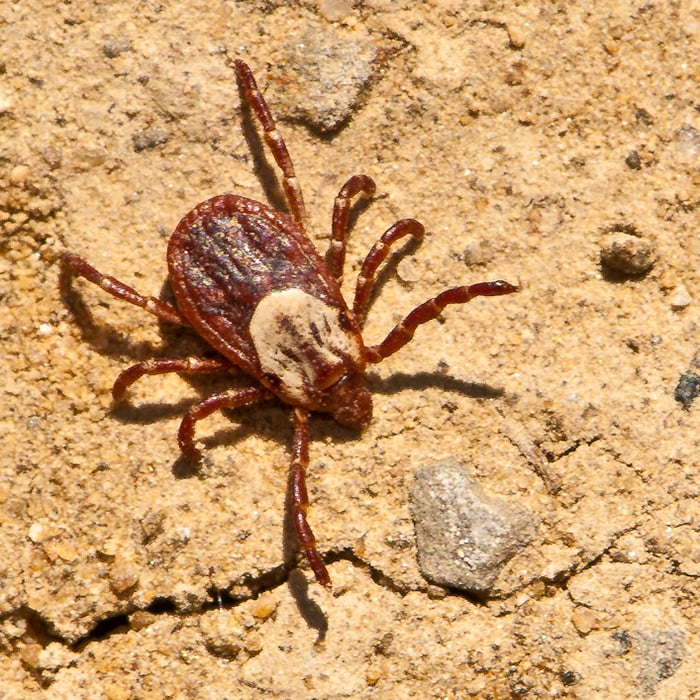
American Dog Tick (Dermacentor variabilis)
Found throughout North America, American dog ticks are larger and often encountered in grassy areas. They can transmit diseases like Rocky Mountain spotted fever, posing a risk to both humans and pets.

Ixodes Ricinus (European Castor Bean Tick)
Prevalent in Europe and parts of Asia, this tick species can transmit various diseases, including Lyme disease. It’s crucial to be vigilant in tick-endemic areas to reduce the risk of bites and infections.
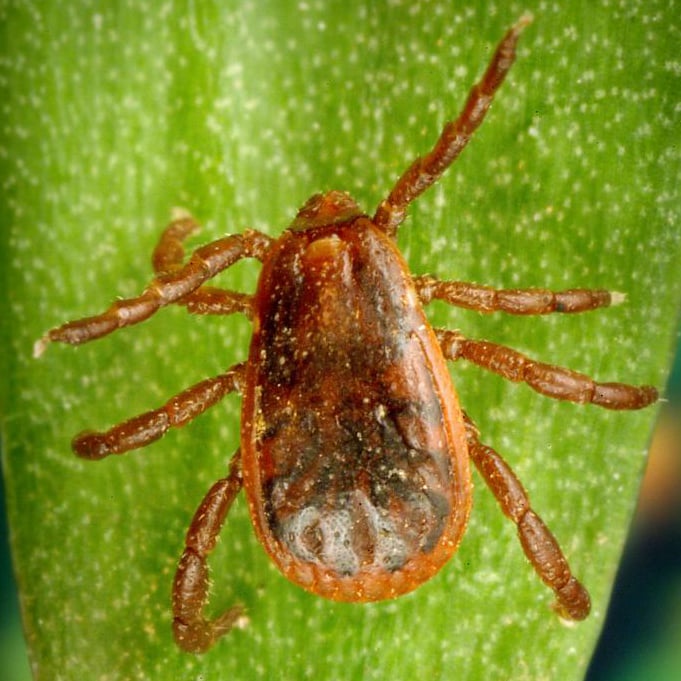
Brown Dog Tick (Rhipicephalus sanguineus)
This tick species is globally distributed and primarily infests dogs. While it doesn’t transmit as many diseases to humans, it’s essential to protect pets from infestations, which can lead to discomfort and secondary infections.
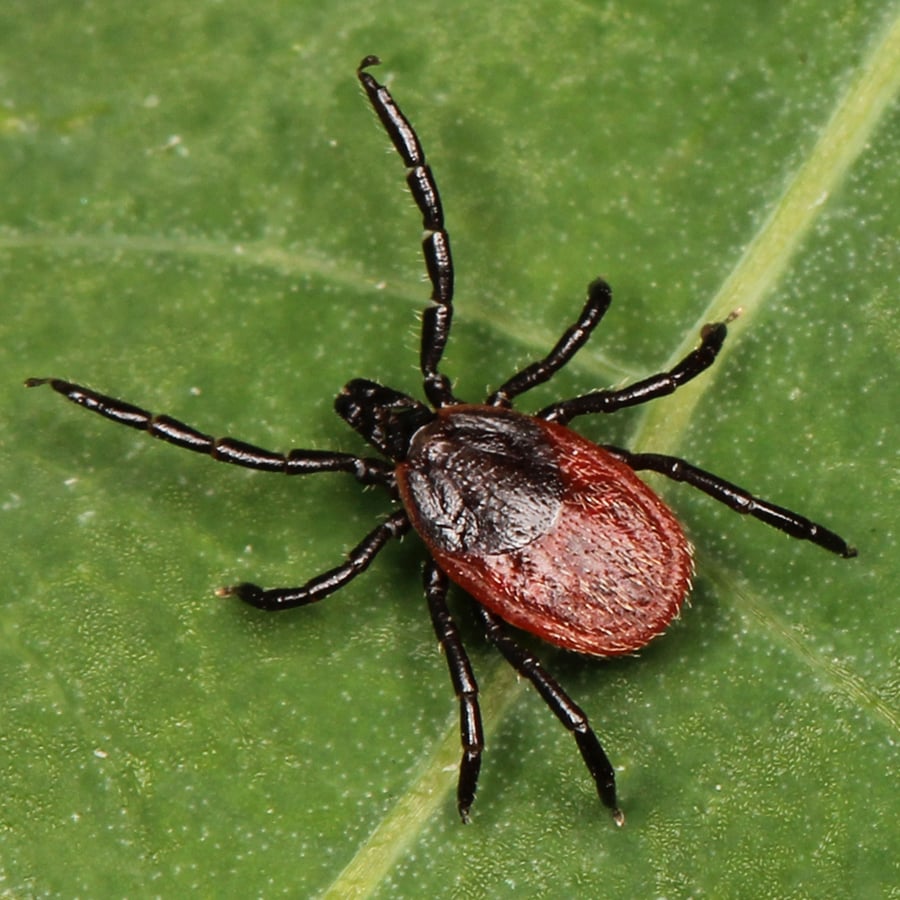
Ixodes Pacificus (Western Black-Legged Tick)
Found along the western coast of North America, these ticks are implicated in Lyme disease transmission on the Pacific coast. Hiking and camping enthusiasts should take precautions when venturing into these regions.
To safeguard against tick bites and tick-borne illnesses, individuals should adopt protective measures, such as wearing long clothing, using tick repellents, and conducting regular tick checks, especially after outdoor activities in tick-prone areas. By staying informed about these common tick species, you can better protect yourself and your loved ones from potential health risks.
Ticks are ancient parasites, with evidence of their existence dating back to the Cretaceous period, over 100 million years ago.
The life cycle of ticks
Ticks undergo a fascinating and complex life cycle consisting of several stages, each with its own characteristics and behaviors. Understanding the life cycle of ticks is crucial for effective tick management and disease prevention:

Egg Stage
The tick life cycle begins with the laying of eggs by an adult female tick. A single female can lay thousands of eggs at once, often in leaf litter or vegetation near the ground. These eggs hatch into larval ticks.

Nymphal Stage
Nymphs have eight legs and are larger than larvae but still relatively small. Like larvae, nymphs seek a host for another blood meal. After feeding, they drop off the host and molt into the adult stage.

Larval Stage
Larval ticks, also known as seed ticks, have six legs and are tiny, usually no larger than a grain of sand. They are parasitic and attach themselves to a host, such as a small mammal or bird, for a blood meal. After feeding, they drop off the host and molt into the nymphal stage.

Adult Stage
Adult ticks are the largest and most noticeable stage in the tick life cycle. They have eight legs and are sexually mature. Male and female adult ticks typically find a host for mating. After mating, the female feeds on a host to obtain nutrients for egg production. Once engorged, she detaches from the host, lays eggs, and then dies.
The duration of each life stage and the number of blood meals required vary among tick species. Ticks can be active year-round, depending on environmental conditions and geographic location. Some ticks may complete their life cycle in a single year, while others may take several years. Understanding the life cycle of ticks is essential for effectively preventing tick bites and managing tick populations. It’s important to note that ticks can transmit diseases at various stages of their life cycle, so proactive measures, such as tick checks and tick repellents, should be taken to reduce the risk of tick-borne illnesses throughout the year.
The life cycle of ticks typically includes four stages: egg, larva, nymph, and adult. They molt between these stages and may feed on a different host at each stage.
The seasons most conducive to ticks
Ticks are ectoparasites that thrive in specific environmental conditions, and their prevalence varies by season. Understanding the seasons most conducive to ticks is essential for effective prevention and awareness:

Spring
Spring marks the beginning of tick season in many regions. As temperatures rise, ticks become more active. In this season, nymphal ticks are a particular concern, as they are smaller and harder to detect but can transmit diseases like Lyme disease. Outdoor enthusiasts should take precautions, such as wearing protective clothing and using tick repellents.

Early Fall
Ticks remain active well into early fall, taking advantage of the lingering warmth. Adult ticks are more prevalent during this season, increasing the risk of tick bites. It’s important to maintain tick awareness and continue preventive measures until cooler weather sets in.
Summer
Summer is typically the peak of tick activity. The warm and humid conditions are ideal for ticks to quest for hosts. Hikers, campers, and anyone spending time in wooded or grassy areas should be vigilant during summer months. Regular tick checks and prompt removal are crucial to prevent tick-borne illnesses.
Late Fall/Winter
Ticks become less active as temperatures drop in late fall and winter. However, in some regions with milder winters, ticks may still pose a threat during this time. While tick encounters are less common in colder months, they can still occur, so it’s wise to remain cautious.
To minimize the risk of tick encounters and tick-borne diseases, individuals should adopt preventive measures year-round. These measures include wearing appropriate clothing, using tick repellents, and performing regular tick checks on both themselves and pets. By staying informed about the seasons most conducive to ticks, you can take proactive steps to protect your health and enjoy outdoor activities safely.
Ticks are not insects but are classified as arachnids, making them more closely related to spiders and scorpions.
Where do ticks come from, their habitat.
Ticks are ubiquitous ectoparasites that originate from natural environments and thrive in specific habitats. Understanding where ticks come from and their preferred habitats is essential for minimizing encounters and potential health risks:
Natural Origins:
Ticks have been on Earth for millions of years, with their ancestors originating in ancient forests. Over time, they have evolved to adapt to various ecosystems. Ticks can be found on every continent except Antarctica, and they have adapted to a wide range of environments.
Habitats:
Ticks thrive in areas where they can find suitable hosts for blood meals and maintain the necessary humidity levels to survive. Common tick habitats include:

Wooded Areas
Ticks are frequently found in forests and wooded regions. They hide in leaf litter, tall grass, and shrubs, waiting to attach themselves to passing hosts, which can be mammals, birds, or even reptiles.

Moist Environments
Many tick species require a humid environment to survive. They are often found in areas near bodies of water, such as riverbanks, lakeshores, and wetlands.

Animal Habitats
Ticks are commonly found on wildlife, such as deer, rodents, and birds. These animals serve as hosts, and ticks can drop off them into the environment, increasing the likelihood of human encounters.

Grasslands
Ticks are prevalent in grassy meadows, fields, and pastures. They climb vegetation, extending their front legs to latch onto passing hosts.

Urban and Suburban Areas
Ticks can also adapt to human-altered environments. They may inhabit urban parks, gardens, and even residential yards if suitable hosts and hiding places are available.
Ticks are most active during warmer months, but their activity can vary by species and geographic location. To reduce the risk of tick encounters, individuals should take precautions when venturing into tick-prone areas, including wearing long clothing, using tick repellents, and performing regular tick checks after outdoor activities. By understanding where ticks come from and their preferred habitats, people can better protect themselves and their pets from potential tick bites and tick-borne diseases.
Ticks are obligate blood-feeding ectoparasites, meaning they require a blood meal to complete their life cycle and reproduce.
What attracts ticks into our homes
Ticks are outdoor-dwelling parasites, but they can find their way into homes under certain conditions. Understanding what attracts ticks into our homes can help homeowners take preventive measures to minimize these unwelcome intrusions:
Hosts and Pets
Ticks are initially attracted to homes by hosts like rodents, birds, or even larger mammals. These animals can carry ticks into yards or homes. Likewise, if you have pets that spend time outdoors, they can pick up ticks and bring them indoors.
Warm and Humid Conditions
Ticks require a certain level of humidity to survive. If your home has a humid environment, especially in basements or crawl spaces, it can be inviting to ticks seeking shelter.
Vegetation Near the Home
Ticks often hide in tall grasses, shrubs, and leaf litter around the perimeter of homes. If your property features dense vegetation close to your house, it provides ticks with an easy pathway indoors. Trimming vegetation and maintaining a clear buffer zone can help.
Cracks and Crevices
Ticks are skilled at finding small openings in walls, doors, and windows. Gaps or cracks in the structure of your home can provide entry points for ticks seeking refuge from the elements.
Wildlife Activity
Homes located near wooded areas or natural habitats are more prone to tick invasions. Increased wildlife activity, such as deer or raccoons frequenting your property, can introduce ticks into the vicinity of your home.
Indoor Plants
Although less common, ticks can sometimes attach themselves to indoor plants brought in from outdoors. Regularly inspect potted plants for signs of ticks.
To prevent ticks from entering your home, consider the following precautions:
-
-
- Keep your yard well-maintained, including regular lawn mowing and clearing of leaf litter.
- Install fencing or barriers to deter wildlife from entering your property.
- Check your pets for ticks after outdoor activities and use tick preventive measures for them.
- Seal cracks and gaps in your home’s exterior.
- Maintain indoor humidity levels to reduce tick survival.
-
By understanding what attracts ticks into our homes and taking proactive steps to address these factors, homeowners can create a less hospitable environment for ticks, reducing the risk of tick encounters and potential health issues associated with tick bites.
Ticks have specialized sensory structures, known as ‘Haller’s organs,’ located on their first pair of legs, which help them locate hosts by detecting carbon dioxide, heat, and chemical signals.
Signs that you have a ticks’ infestation
Detecting a tick infestation early is crucial for effective pest control and preventing potential health risks. Knowing the signs of a tick infestation can help homeowners take prompt action to address the issue:
Frequent Tick Encounters
If you or your pets consistently find ticks indoors, it’s a clear indication of a potential infestation. Ticks should not be a common presence in your home.
Tick Eggs or Nymphs
Check hidden corners, cracks, and crevices for tick eggs or nymphs. These immature ticks are smaller and may cluster in protected areas like baseboards, upholstery, or carpeting.
Unusual Pet Behavior
Pets may exhibit unusual behavior if they sense ticks in the home, such as excessive scratching, licking, or restlessness. Pay attention to changes in your pet’s behavior.
Ticks on Pets
Regularly finding ticks on your pets, even after outdoor activities in tick-prone areas, may suggest an infestation in your yard or home. Inspect your pets thoroughly and consult a veterinarian for guidance on tick prevention.
Increased Wildlife Activity
If you notice an upsurge in wildlife activity around your property, such as deer or raccoons, it can increase the risk of ticks being introduced into your surroundings. Keep an eye on any wildlife activity near your home.
Ticks in Hidden Spaces
Inspect less-frequented areas of your home, such as crawl spaces, basements, or storage areas. Ticks may seek refuge in dark, quiet spaces.
Tick Bites
Tick bites on family members or guests can be a sign of a tick infestation. These bites often leave red, itchy welts and may be accompanied by symptoms like fever or rash in the case of tick-borne diseases.
Tick-Prone Outdoor Areas
If you live near wooded areas, tall grass, or a known tick habitat, your property may be more susceptible to tick infestations. High-risk locations increase the likelihood of ticks finding their way indoors.
Tick-Related Allergies or Illnesses
If family members experience unexplained allergic reactions or tick-borne illnesses, it’s essential to investigate the possibility of a tick infestation within your living environment.
If you suspect a tick infestation in your home or on your property, it’s advisable to consult with a pest control professional experienced in tick management. They can assess the extent of the infestation and implement effective eradication measures. Regular tick checks, preventive measures, and maintaining a well-kept yard can also help prevent tick infestations in the first place. Early detection and intervention are key to minimizing the impact of tick infestations on your family’s health and well-being.
Ticks are notorious vectors for various diseases, including Lyme disease, Rocky Mountain spotted fever, and anaplasmosis, among others.
Rooms where ticks hide
Ticks are notorious blood-feeding parasites often associated with outdoor environments, but they can sometimes find their way inside your home. Understanding where ticks can hide indoors is essential for prevention and control.

Bedrooms
Ticks can potentially hide in bedrooms, particularly in areas where pets or outdoor clothing are kept. Always check bedding, pet bedding, and clothing for any hitchhiking ticks.
Laundry Rooms
Ticks can hide in damp or soiled laundry. Ensure that you thoroughly check and clean clothing and linens, especially if they’ve been outdoors.
Living Rooms
Ticks may occasionally find their way into living areas, especially if pets carry them inside. Inspect upholstered furniture, curtains, and rugs, where ticks could seek refuge.
Garages
Ticks might find their way into garages if they attach to vehicles or are brought in with outdoor gear. Be vigilant in checking stored items and corners of the garage.
Basements
Dark and quiet, basements can provide ticks with suitable conditions for survival. Look for ticks in storage areas or near entry points.
Bathrooms
Although less common, ticks can occasionally be found in bathrooms if they’ve been transported inside on clothing or through open windows.
To prevent ticks from hiding indoors, regularly inspect yourself, your family, and your pets after spending time outdoors. Use tick repellents and consider professional pest control services if you suspect a tick infestation. Knowing where ticks can hide in your home is the first step in preventing infestations. Being proactive in tick prevention and control can help keep your indoor environment safe and free from these unwanted pests.
The dangers and damages that ticks can cause
Ticks are small arachnids that, despite their size, can pose significant dangers and damages to both humans and animals. Understanding these risks is vital for effective tick prevention and protection:
Tick-Borne Diseases
Ticks are notorious vectors of various diseases. Lyme disease, transmitted by the black-legged tick, can lead to serious health complications if left untreated. Other diseases like Rocky Mountain spotted fever, anaplasmosis, and ehrlichiosis can also result from tick bites, causing a range of symptoms from mild to severe.
Secondary Infections
Improper tick removal or scratching a tick bite site can lead to skin infections. Bacterial infections like cellulitis can occur when the bite area becomes infected, causing pain and swelling.
Reduced Livestock Productivity
In agricultural settings, ticks can adversely affect livestock. Tick infestations in cattle, for example, can lead to reduced milk production, weight loss, and economic losses for farmers.
Emotional and Psychological Impact
Tick-borne diseases can have a lasting impact on individuals’ quality of life. Chronic conditions like post-treatment Lyme disease syndrome (PTLDS) can result in ongoing physical and psychological symptoms, affecting mental health and overall well-being.
Allergic Reactions
Tick bites can trigger allergic reactions in some individuals. Symptoms may include itching, swelling, and localized redness. Severe allergic reactions, though rare, can result in anaphylaxis, a life-threatening condition.
Anemia in Pets
Ticks are not just a concern for humans. In pets, ticks can cause anemia, a condition characterized by a shortage of red blood cells. This can lead to weakness, fatigue, and even life-threatening complications.
Environmental Impact
Ticks play a role in the transmission of diseases among wildlife, and they can have ecological consequences. For example, ticks are associated with the spread of chronic wasting disease (CWD) in deer populations.
Cost of Healthcare
Treating tick-borne diseases can be expensive, with medical bills, medications, and follow-up care adding up over time. Additionally, the financial burden of treating tick-related illnesses can be significant.
To mitigate the dangers and damages that ticks can cause, it’s essential to adopt preventive measures. These include wearing protective clothing, using tick repellents, performing regular tick checks, and seeking prompt medical or veterinary attention if a tick bite is suspected. By staying informed about the potential risks and being proactive in tick prevention, individuals and communities can reduce the impact of ticks on health and well-being.
Ticks often exhibit a degree of host specificity, preferring to feed on certain host species. For example, some ticks primarily infest birds, while others prefer mammals.
How to get rid of ticks / Available treatments.
Dealing with tick infestations and addressing tick bites requires a combination of preventive measures and treatments to ensure the safety and well-being of humans and animals. Here’s a guide on how to get rid of ticks and the treatments available:
Tick Removal
- The first step in dealing with a tick bite is safe removal. Use fine-tipped tweezers to grasp the tick as close to the skin’s surface as possible.
- Gently pull upward with steady, even pressure. Avoid twisting or squeezing the tick to prevent its mouthparts from breaking off in the skin.
- After removal, clean the bite area and your hands with soap and water. Dispose of the tick by placing it in a sealed bag or container or flushing it down the toilet.
Environmental Control
- Reduce tick-friendly environments by maintaining a well-groomed yard. Regularly mow grass, trim shrubs, and remove leaf litter.
- Consider tick control treatments for your yard, such as pesticides applied by professionals.
Pet Protection
- Protect your pets from tick infestations by using tick preventatives prescribed by veterinarians.
- Check pets for ticks regularly, and promptly remove any you find.
- Consult with a veterinarian if you suspect your pet has been bitten by a tick or is showing signs of tick-related illness.
Tick Control Products
- Various tick control products are available for use in and around homes. These may include tick repellent sprays, tick tubes, and tick-specific pesticides.
- Always follow product labels and instructions for safe and effective use.
Tick Prevention
- Prevention is the best approach to avoid tick infestations. Wear long clothing and use insect repellents containing DEET or picaridin when venturing into tick-prone areas.
- Treat clothing and gear with permethrin, a repellent specifically designed for ticks.
- Perform thorough tick checks on yourself, family members, and pets after outdoor activities.
Tick-Borne Disease Treatment
- If you suspect a tick-borne disease, seek medical attention promptly. Early treatment with antibiotics, as prescribed by a healthcare provider, can be effective in preventing complications.
- Common tick-borne diseases, such as Lyme disease, may require a course of antibiotics over several weeks.
Professional Pest Control
- If you have a severe tick infestation in your home or yard, consider hiring a pest control professional experienced in tick management.
- Professionals can assess the extent of the infestation and implement targeted treatments to eliminate ticks effectively.
Remember that consistency is key when dealing with fleas. Treat your pets year-round with preventive products and maintain a clean living environment to minimize the risk of future infestations. Always consult with your veterinarian for the most appropriate flea control products for your pets, and follow product labels and usage instructions for optimal results.
Ticks that become trapped in amber provide valuable insights into prehistoric blood meals. Some ancient ticks preserved in amber have been found with dinosaur blood remnants.
How to prevent tick infestations
Preventing tick infestations is crucial for safeguarding the health of both humans and animals. By implementing effective preventive measures, you can reduce the risk of encountering ticks and tick-related illnesses. Here are key strategies on how to prevent tick infestations:
Clothing Choices
- When venturing into tick-prone areas like forests, tall grasses, or wooded trails, wear long-sleeved shirts, long pants, and closed-toe shoes.
- Tuck your pants into your socks or boots to create a barrier that makes it harder for ticks to reach your skin.
Tick Checks
- Conduct thorough tick checks on yourself, family members, and pets after spending time outdoors.
- Pay close attention to hidden areas like the scalp, behind the ears, in the armpits, and around the waistband.
Tick Control Products
- Consider tick control products for your pets. Consult with a veterinarian to select appropriate tick preventatives.
- Use tick control products designed for your home and yard, such as tick tubes or targeted pesticides, especially if you live in a tick-endemic area.
Tick Repellents
- Apply an EPA-approved tick repellent to exposed skin and clothing. Look for products containing DEET, picaridin, or oil of lemon eucalyptus.
- Follow the product’s instructions carefully, especially when applying to children or pets.
Outdoor Awareness
- Stay on well-trodden paths and avoid walking through tall grasses or underbrush where ticks are commonly found.
- Consider using designated trails and avoiding overgrown or heavily wooded areas.
Wildlife Deterrence
Install fencing or barriers to discourage wildlife, such as deer or raccoons, from entering your property. Wildlife can introduce ticks to your surroundings.
Permethrin Treatment
- Treat clothing, gear, and shoes with permethrin, a tick-specific repellent. Permethrin can remain effective even after several washes.
- Avoid direct skin contact with permethrin-treated items until they are completely dry.
Yard Maintenance
- Keep your yard well-groomed by regularly mowing the lawn, trimming shrubs, and removing leaf litter.
- Create a buffer zone of wood chips or gravel between wooded areas and your lawn.
Regular Pet Checks
- Check your pets for ticks regularly, especially after outdoor activities.
- Remove any ticks promptly using fine-tipped tweezers.
By adopting these preventive measures, you can minimize the risk of tick infestations and reduce the likelihood of tick bites. Staying informed about tick-prone areas and following these strategies will help protect your health and the health of your loved ones, both indoors and outdoors.
Conclusion
In conclusion, tick infestations pose significant challenges and potential health risks to both humans and animals. These tiny arachnids, with their unique ability to feed on blood, have evolved to thrive in various environments, making them a persistent concern in many regions around the world.
Detecting and addressing tick infestations promptly is crucial to prevent potential health complications. Vigilance, regular tick checks, and the use of preventive measures like repellents and protective clothing are essential steps in minimizing the risk of tick bites and the transmission of tick-borne diseases.
It’s important to remember that tick infestations can affect not only individuals but also pets and livestock. Comprehensive tick control strategies may include environmental management, tick prevention for pets, and, in severe cases, professional pest control services.
By staying informed about the signs of tick infestations and taking proactive steps to prevent and address them, individuals and communities can reduce the impact of these resilient parasites and enjoy a safer and healthier outdoor experience. Understanding the nuances of tick infestations empowers us to protect ourselves, our families, and our pets from potential harm, fostering a greater sense of well-being in our daily lives.
